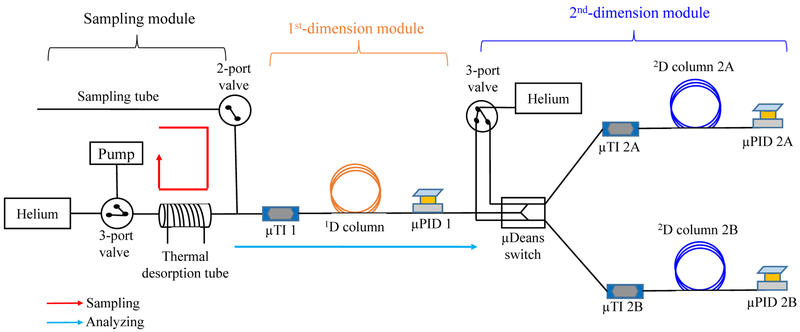Fig. 3.
Layout of the portable 1×2-channel 2D GC device. It consisted of three detachable modules: sampling module, 1st-dimensional separation module, and 2nd-dimensional separation module. The 1st-dimensional module consisted of a micro-thermal injector (μTI), a non-polar column, and a micro-photoionization detector (μPID). The 2nd-dimensional module had two identical channels, each of which consisted of a μTI, a polar column, and a μPID. During operation, breath was collected via the sampling tube and captured by the thermal desorption tube. Then the analytes were transferred to μTI 1 and injected into the 1D column. The elution from the 1D column was detected by μPID 1. If 2nd-dimensional separation was needed, the 2nd-dimensional module was attached to the outlet of the 1D column and the elution from the 1D column was sliced and sent alternately to one of the two 1D columns via a micro-Deans switch. The portable GC can operate as 1D GC alone when the 2nd-dimensional module is disabled or detached, or as comprehensive 2D GC. Comprehensive 2D GC operation required additional 20 seconds compared to 1D GC operation alone, which was negligible considering the overall assay time of ~30 minutes. For details of GC operation and 2D GC chromatogram construction, see the ESM

